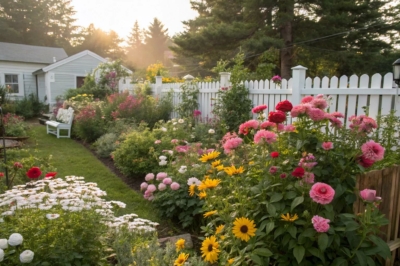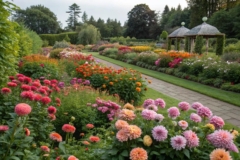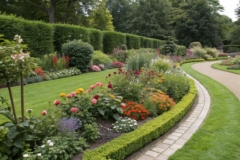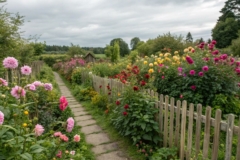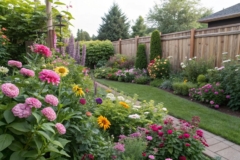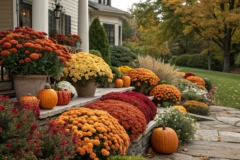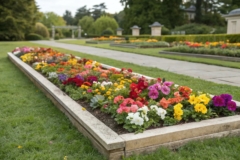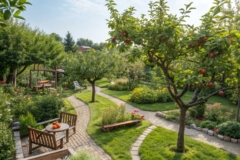1. Raised Beds for Easy Access
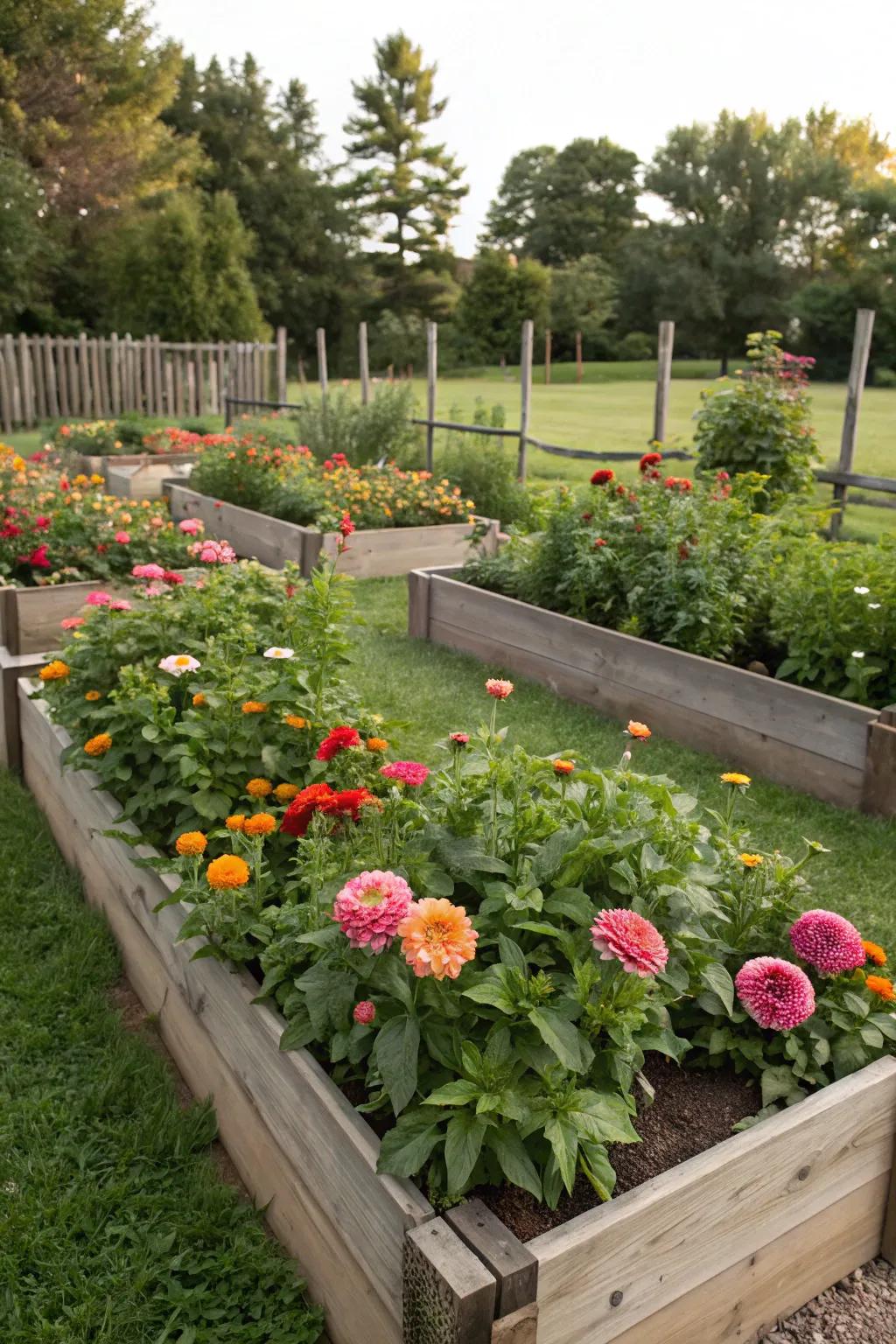
Raised beds are fantastic for drainage and accessibility, especially if your soil isn’t perfect. In my garden, they offer a way to keep things organized and allow for easier harvesting.
A few choices to try:
- Wooden Raised Garden Bed Kit: Enhance your garden’s layout with this easy-to-assemble wooden raised garden bed kit.
- Galvanized Steel Raised Garden Bed: Ensure durability and longevity for your plants with this sturdy galvanized steel raised bed.
- Premium Garden Soil Mix: Boost plant growth and health using this nutrient-rich premium garden soil mix.
2. Blending Edible and Ornamental Plants
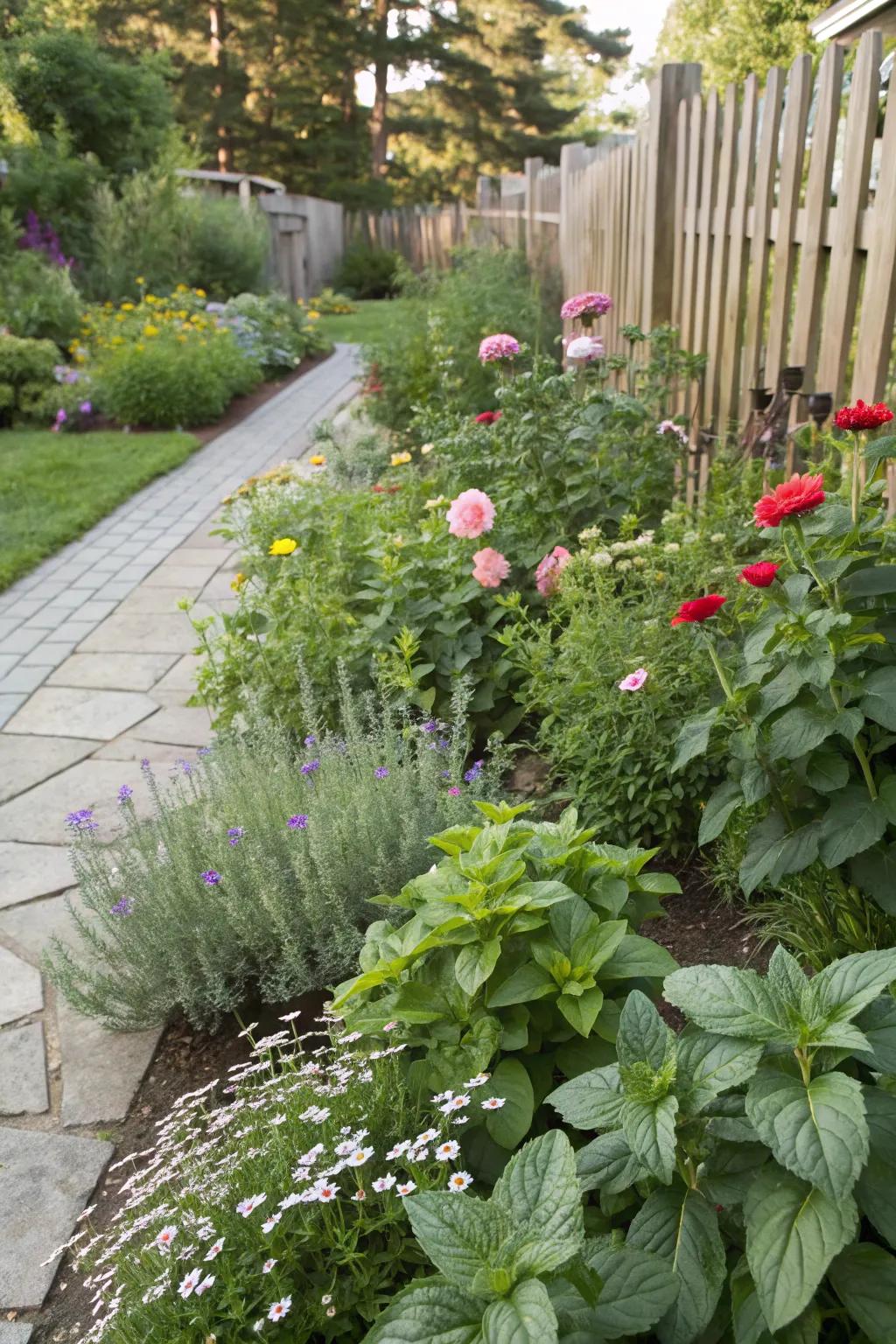
Mixing herbs and edible plants with your flowers can add an unexpected twist. In my garden, basil and lavender not only add fragrance but also make stunning bouquet fillers.
You might like:
- Herb Seed Starter Kit: Grow your own basil and lavender for fragrant, vibrant bouquets right from your garden.
- Decorative Garden Planters: Enhance your garden’s aesthetic while nurturing edible and ornamental plants in stylish planters.
- Organic Plant Fertilizer: Boost the growth of herbs and flowers with this all-natural, nutrient-rich fertilizer.
3. The Classic Row Layout
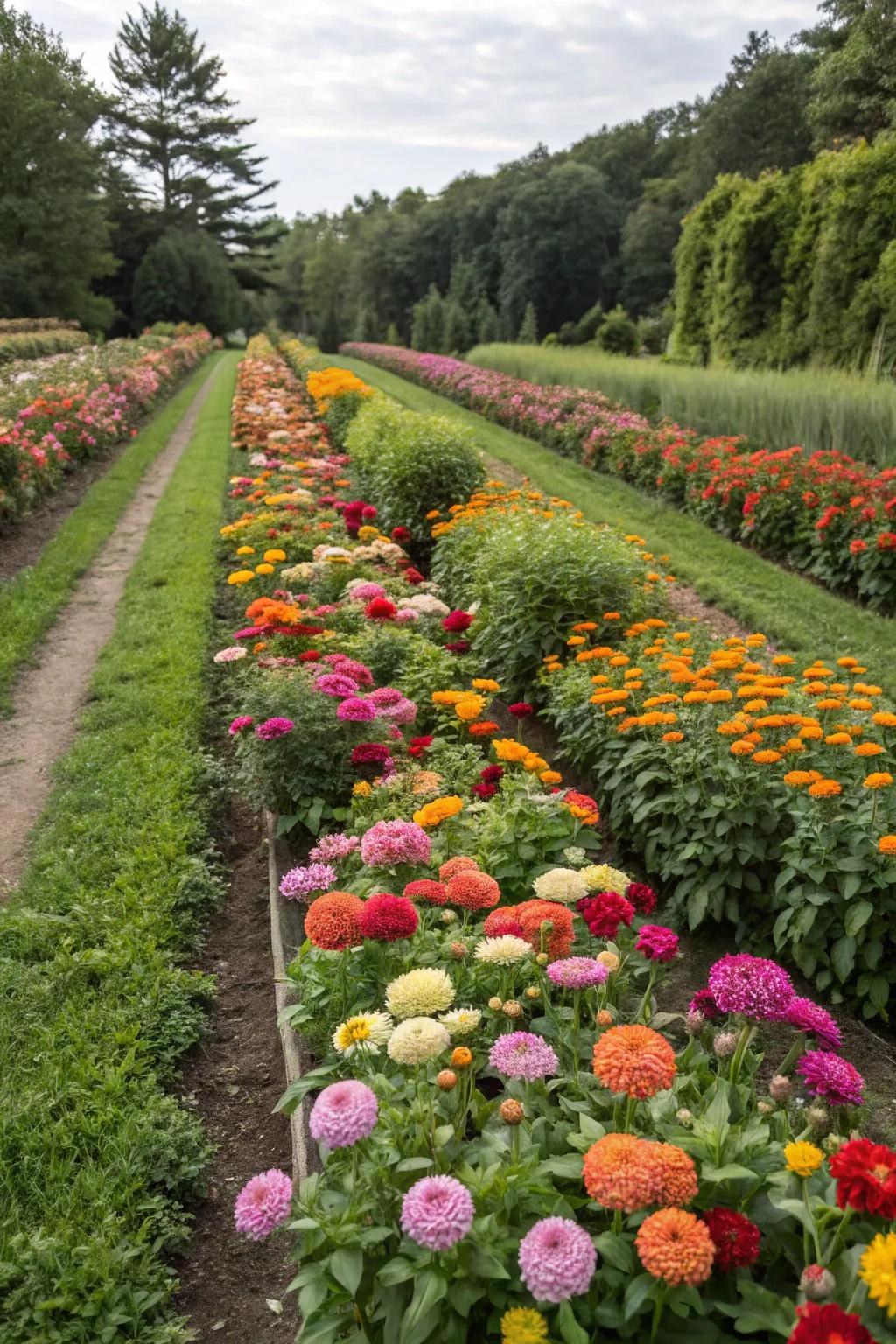
One of the simplest ways to organize your cut flower garden is by planting in neat, orderly rows. This method allows for easy maintenance and harvesting, much like how I started with my first garden plot.
Check if these fit your needs:
- Garden Row Markers: Ensure straight, even rows in your garden with these simple-to-use markers. Easily maintain order!
- Garden Tiller: Prep your soil effortlessly; make planting rows smooth and efficient in your flower garden.
- Flower Fertilizer: Nourish your blooms for vibrant, healthy flowers all season long. Maximize your gardening efforts!
4. Companion Planting Pairs
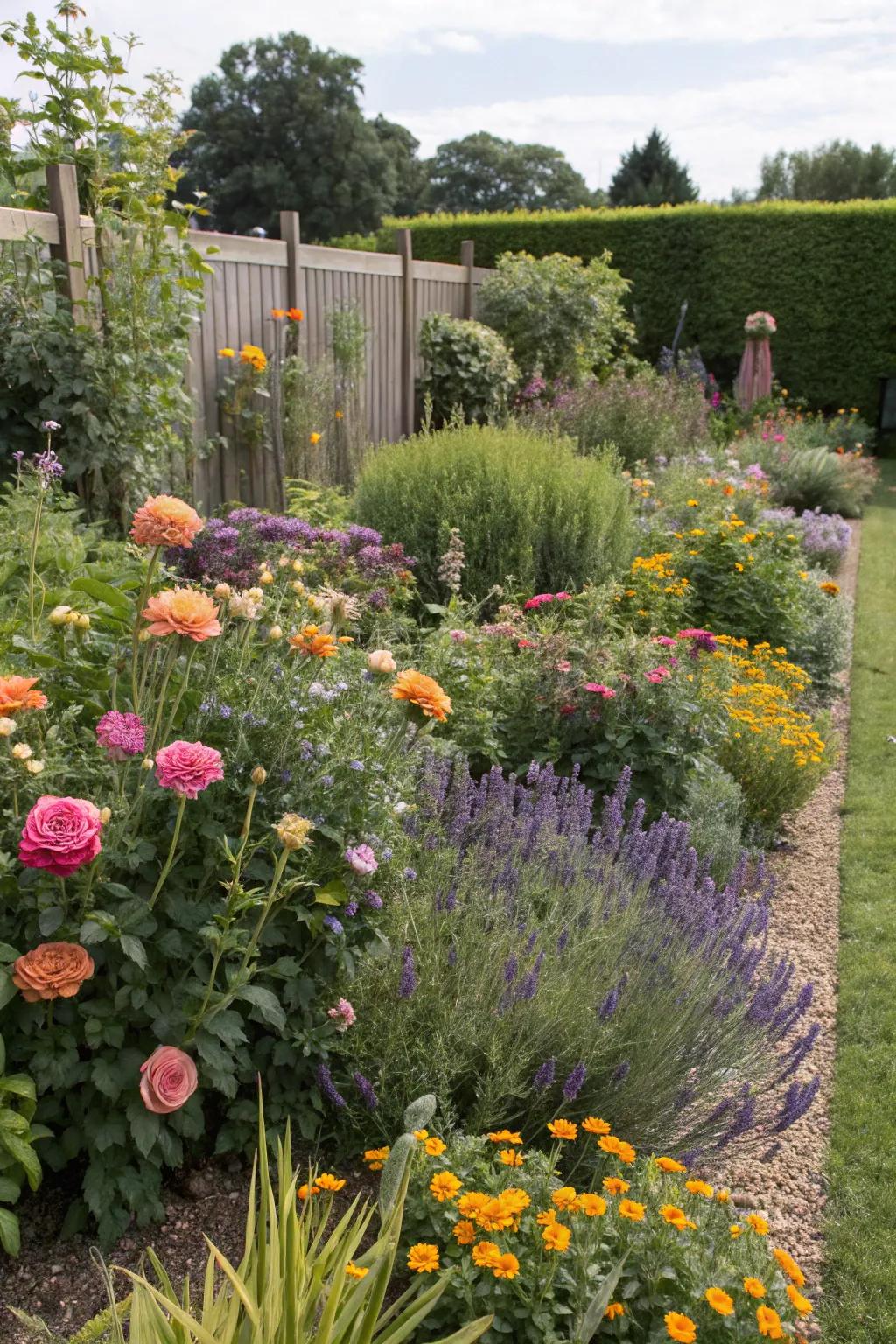
Pairing flowers that thrive together not only enhances growth but also simplifies maintenance. I’ve found that marigolds and zinnias make a delightful and productive duo.
Give these a look:
- Organic Marigold Seeds: Boost your garden’s growth by planting these easy-to-grow organic marigold seeds.
- Zinnia Flower Seeds Mix: Brighten your garden with a vibrant mix of zinnia flower seeds for all-season color.
- Companion Planting Guide Book: Enhance your gardening skills with this guide to successful companion planting techniques.
5. The Cottage Garden Style

A cottage garden blends a variety of plants for a lush, overflowing look. I love the informal beauty of this style, where every plant seems to have a mind of its own.
Possibly handy products:
- Cottage Garden Flower Seed Mix: Transform your garden with a vibrant flower mix for an enchanting cottage garden feel.
- Decorative Garden Pathway Stones: Enhance your garden path with charming stones, creating a quaint cottage atmosphere.
- Rustic Garden Trellis: Support climbing plants with a rustic trellis to add height and charm to your garden.
6. Seasonal Bloom Planning
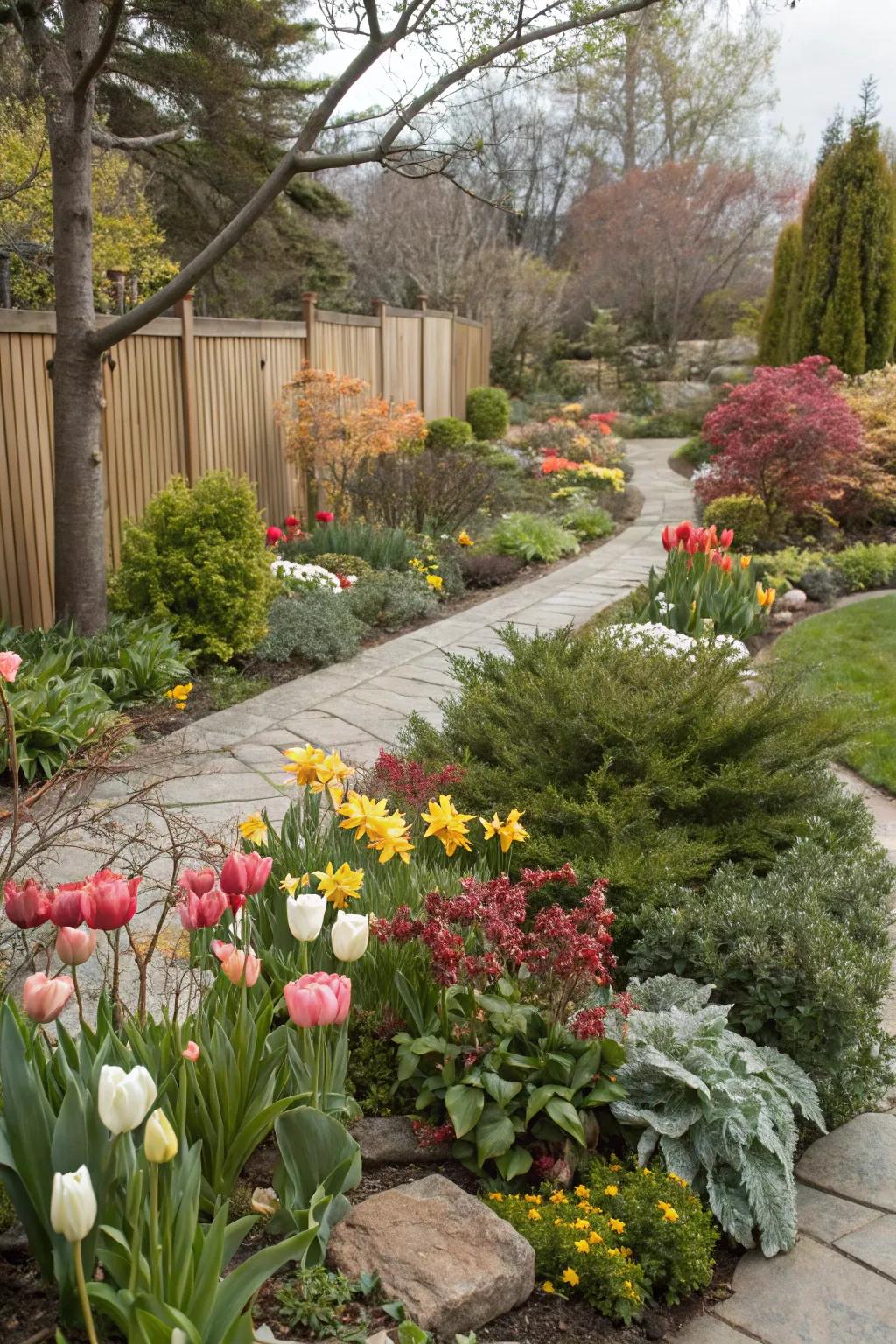
Designing your garden for continuous blooms ensures something is always in flower. I enjoy planning my layout to shift and change with the seasons, offering new surprises throughout the year.
Might be a good match:
- Perennial Flower Seed Mix: Plant a diverse range of perennials for a garden that blooms continuously throughout the year.
- Garden Planting Calendar: Plan and track your planting schedule to ensure seasonal color shifts seamlessly.
- Automatic Soil Moisture Sensor: Ensure optimal moisture levels for diverse blooms with this handy sensor that alerts you when needed.
7. Vertical Gardens with Trellises
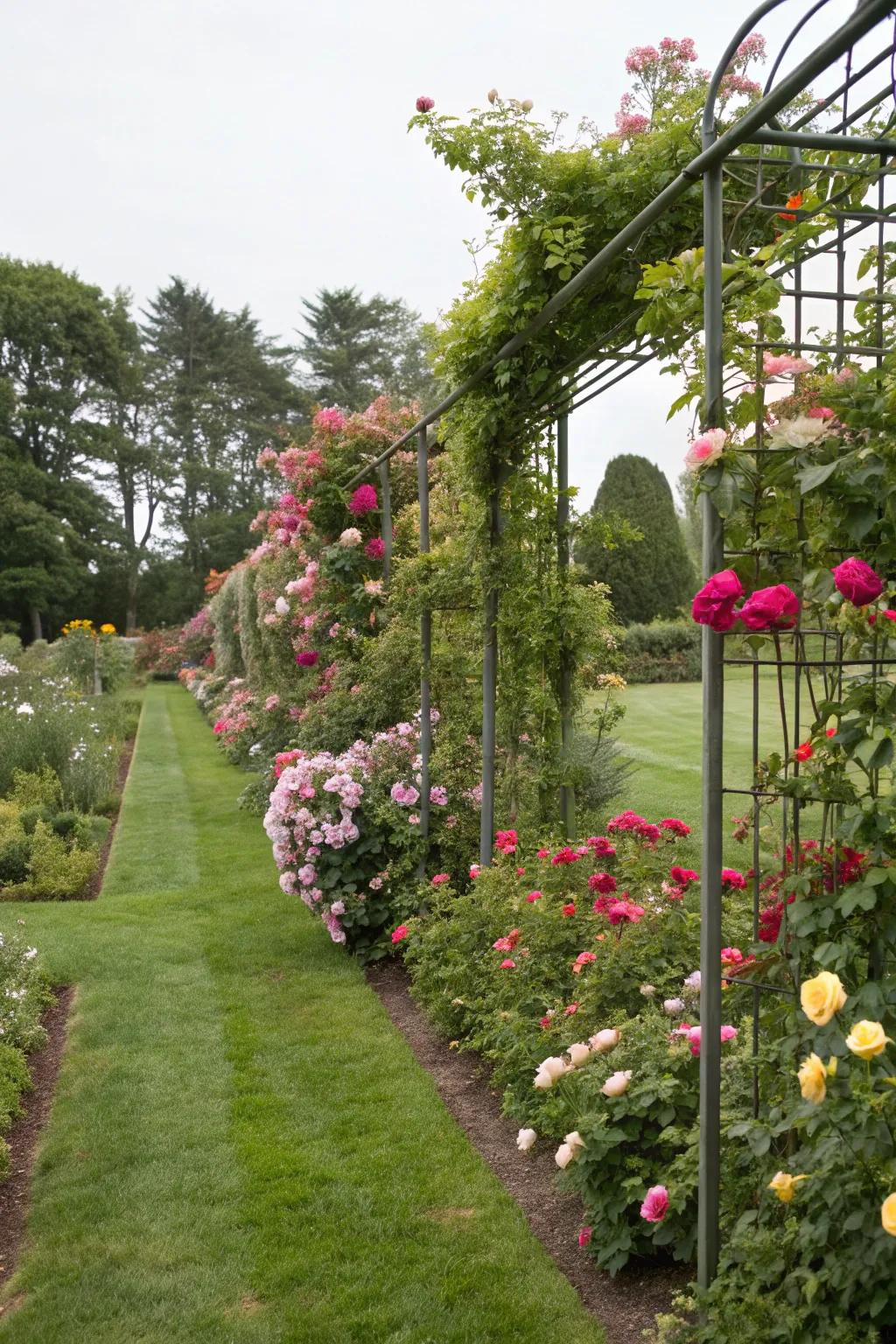
Incorporating trellises can add height and interest, perfect for climbing flowers like sweet peas. It’s a technique I adore for adding dimension without taking up too much ground space.
A few helpful options:
- Garden Trellis Arch: Enhance your garden’s vertical appeal and support climbing plants with this elegant trellis arch.
- Climbing Flower Seeds: Grow vibrant climbing flowers effortlessly to adorn your garden trellises with beautiful blooms.
- Garden Twine for Trellises: Secure your climbing plants with sturdy twine, perfect for maintaining neat and attractive trellises.
8. Pathways and Access Aisles

Creating paths through your garden not only enhances accessibility but adds charm. I love wandering down the gravel paths in my garden, discovering new blooms at every turn.
Explore these options:
- Garden Gravel and Pebble Pack: Enhance your garden’s pathways with durable gravel for a charming, accessible stroll every day.
- Edging Stones for Garden Paths: Define your garden paths with stylish edging stones for a neat and visually appealing border.
- Solar Pathway Lights: Illuminate your pathways with eco-friendly, solar-powered lights for evening ambiance and safety.
9. Color Block Planting
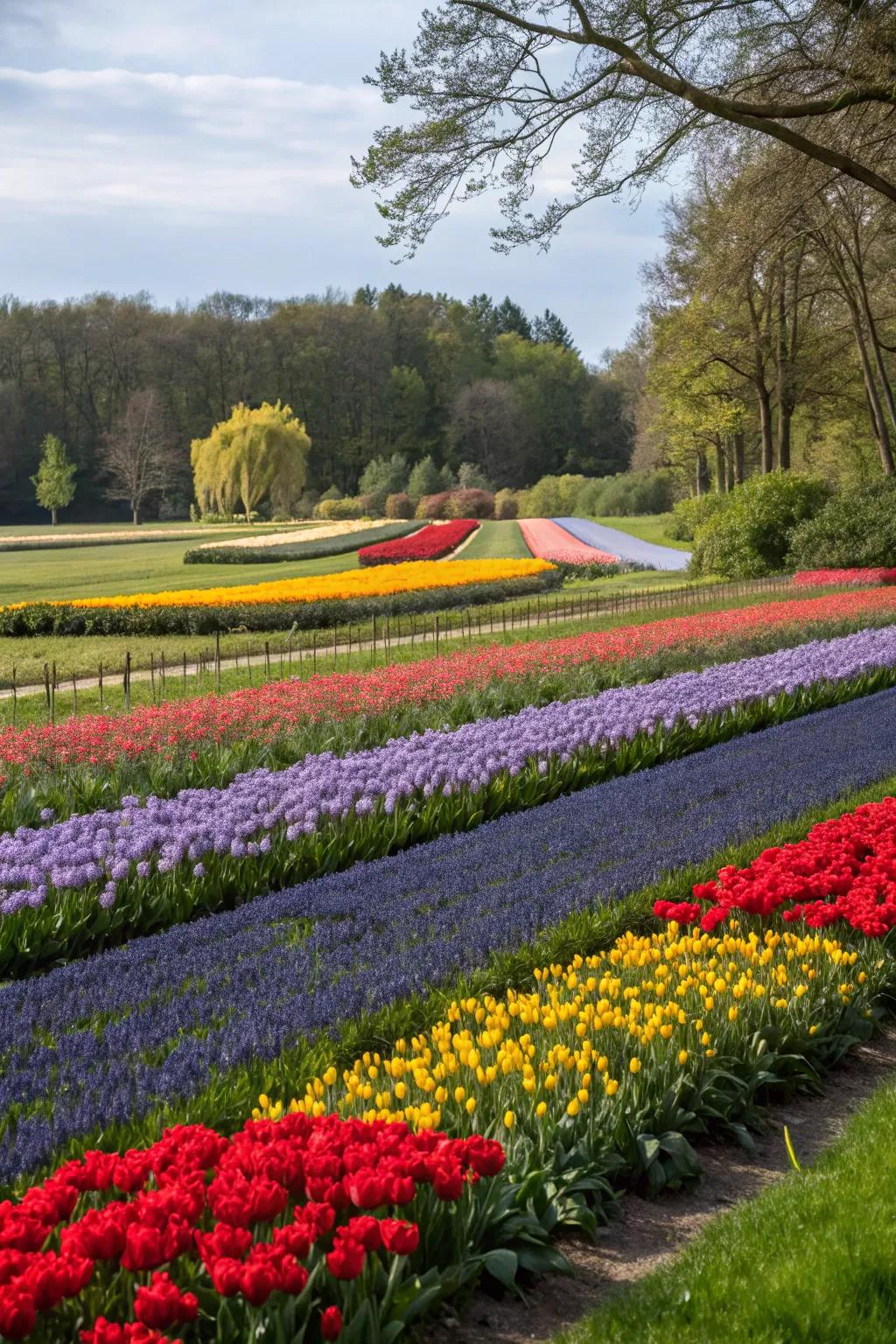
Grouping flowers by color can make a striking statement and ease the process of cutting blooms for arrangements. I often use this method to create stunning visual blocks of color.
Useful items to consider:
- Colorful Flower Seed Mix: Transform your garden with vibrant blooms using a diverse mix of colorful flower seeds.
- Garden Row Markers: Keep your flower rows organized with durable and easy-to-use garden row markers.
- Multipurpose Garden Shears: Effortlessly trim and cut flowers with precision using multipurpose garden shears.
10. Curved Flower Beds
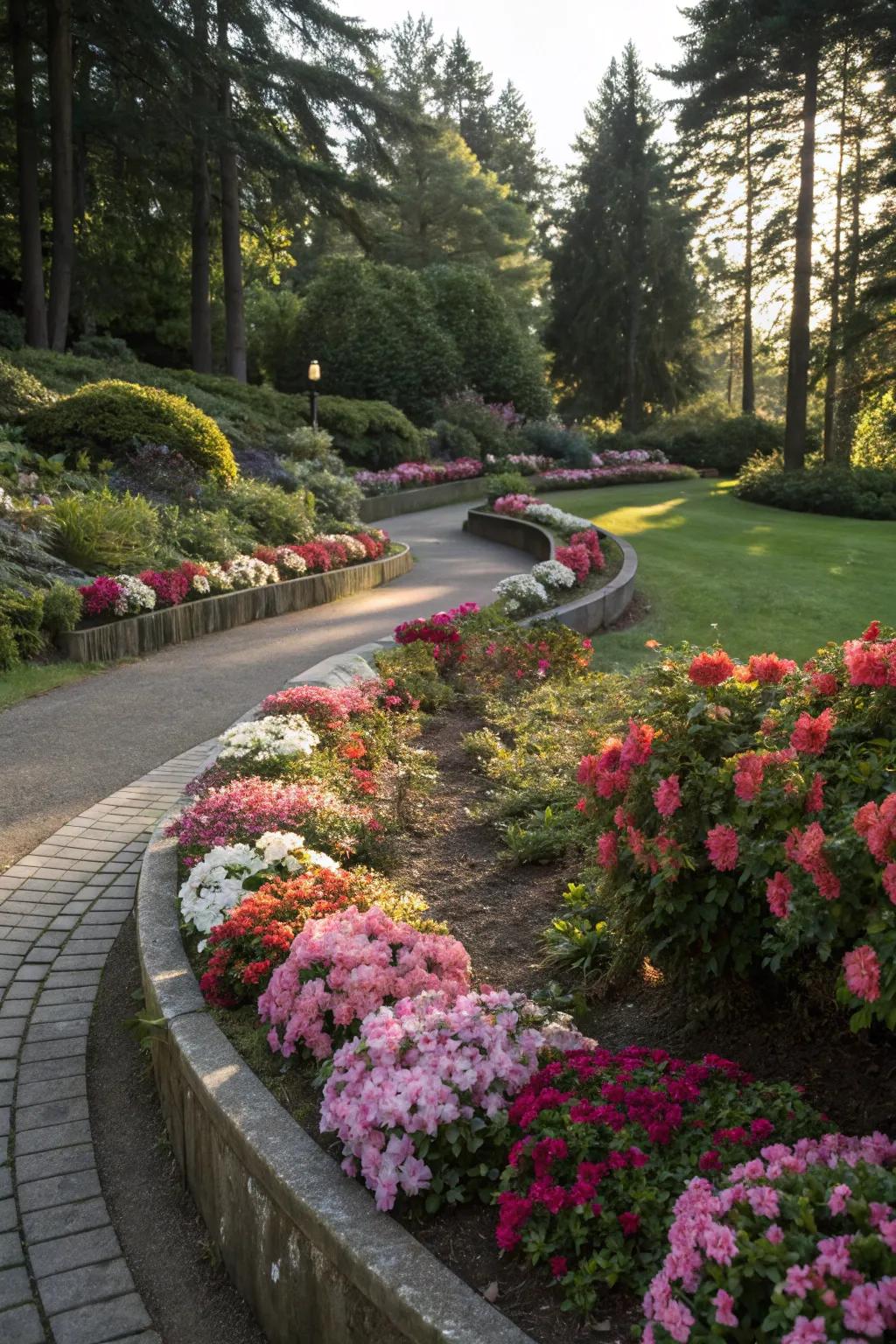
Curved beds add a dynamic visual appeal to your garden, offering a more natural flow. I love how they mimic the gentle curves of nature, making every stroll through the garden feel like a new adventure.
Products that could assist:
- Flexible Garden Edging: Define your garden’s flow with flexible edging, perfect for creating stunning curved designs.
- Curved Garden Path Lighting: Illuminate your garden paths with elegant lighting designed to enhance curved layouts beautifully.
- Decorative Stepping Stones: Add charm and accessibility to your garden with stylish stepping stones along curved pathways.
11. The Wildflower Meadow Look
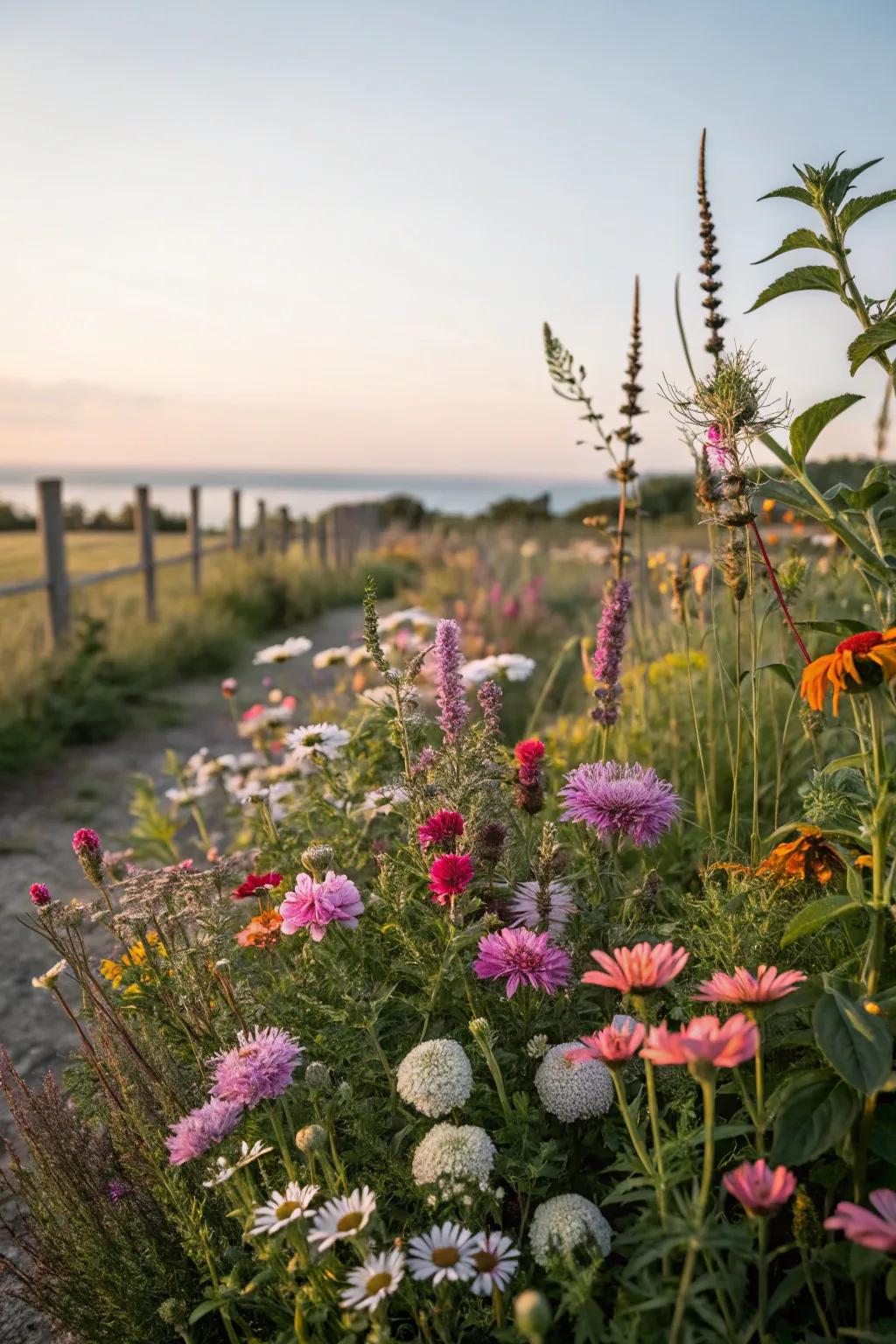
Embrace a more natural look with a wildflower-inspired garden layout. It’s a method that brings a touch of whimsy and requires less rigid planning, perfect for those who love a little wild beauty.
These products might help:
- Wildflower Seed Mix: Transform your garden with vibrant wildflowers, bringing a natural touch with ease and charm.
- Decorative Garden Path Stones: Create winding paths through your meadow, enhancing the garden’s whimsy and accessibility.
- Garden Pruning Shears: Maintain your wildflower garden with ease, ensuring vibrant blooms throughout the seasons.
12. Themed Gardens for Specific Occasions
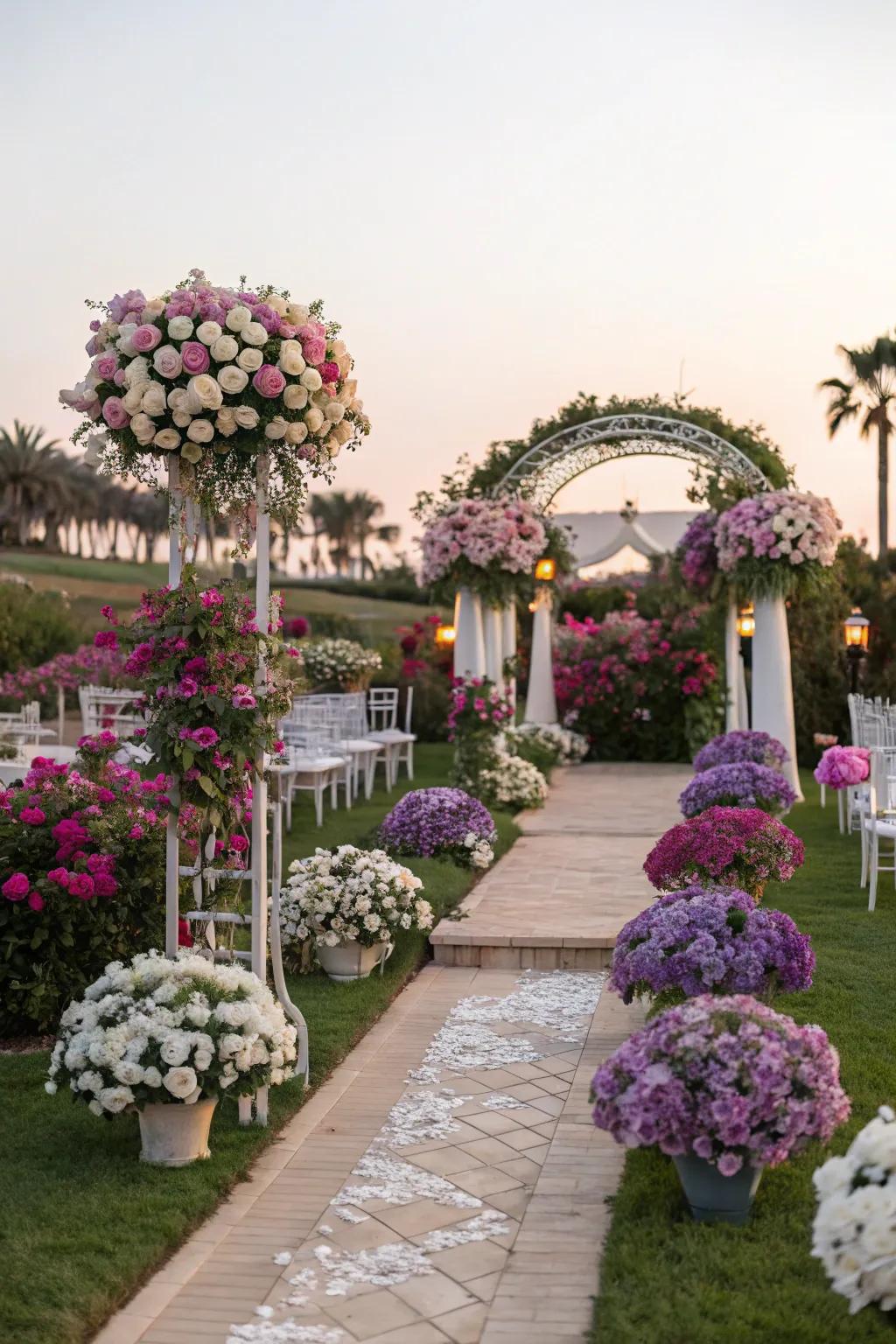
Why not create a garden themed around special occasions, like weddings or parties? I once dedicated a section of my garden to white blooms for a friend’s wedding, and it was a hit!
Maybe worth checking out:
- White Rose Bushes: Enhance your garden with elegant white rose bushes for a stunning wedding display.
- Wedding Arch with Floral Decorations: Create a memorable centerpiece with a beautiful wedding arch adorned with floral decorations.
- Flower Pathway Petals: Lay down enchanting flower petals for a romantic pathway to celebrate special occasions.
13. Integrating Garden Structures
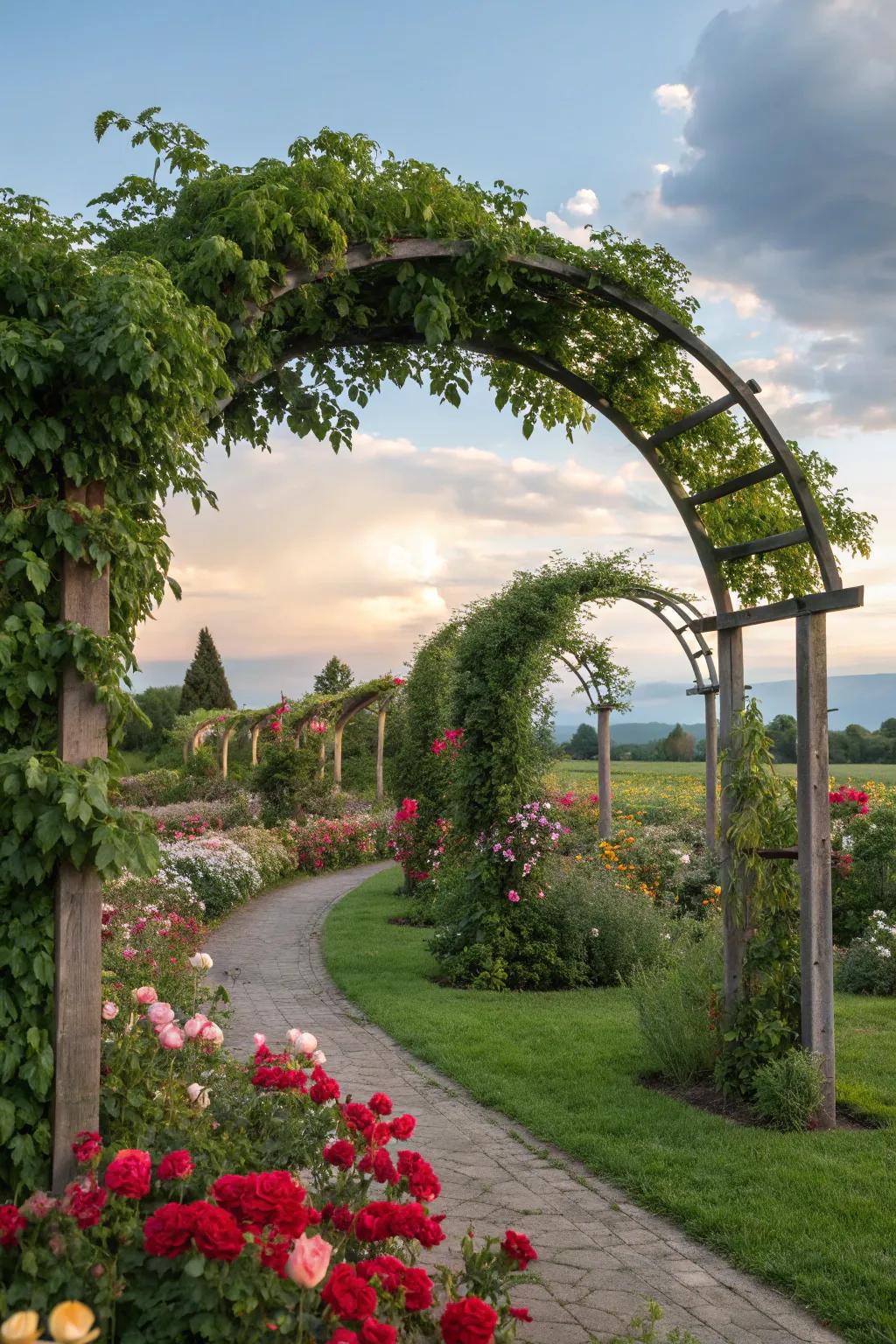
Adding structures like arches or pergolas can create focal points while supporting climbing plants. In my garden, these elements add a touch of elegance and extra space for more flowers.
A few relevant products:
- Garden Arch for Climbing Plants: Enhance your garden’s elegance with a sturdy arch, perfect for supporting climbing blooms.
- Decorative Pergola Kit: Add timeless charm and structure to your garden with an easy-to-assemble pergola.
- Climbing Plant Trellis: Support your climbing flowers beautifully with a stylish and durable garden trellis.
14. Container Gardens for Small Spaces

If space is limited, container gardening can be a lifesaver. I’ve had great success using a mix of pots and planters to create a portable and adaptable flower display.
Consider these options:
- Durable Planter Pots Set: Enhance your garden with versatile pots perfect for any small space or portable setup.
- Adjustable Plant Stand: Elevate your container garden with a sturdy and stylish adjustable plant stand.
- Self-Watering Planters: Simplify plant care with self-watering planters ideal for maintaining your blooms effortlessly.
